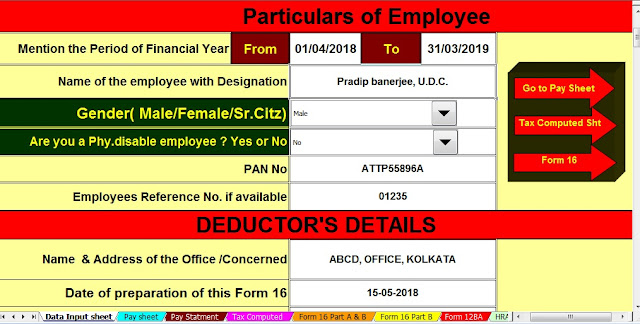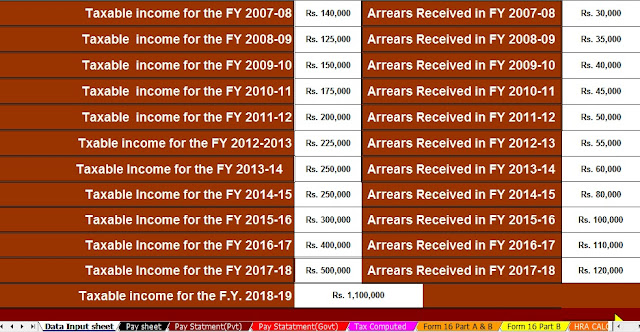Buying a house isn’t easy today if you are living in a metro municipality like Mumbai, Pune, or Delhi. It’s nearly untellable to pay the full price of a house unless you have massive savings or an existing real manner that you can resell. This is the reason why most people take home loans, or rather joint home loans.
What is a Joint Home Loan?
As the name implies, a joint home loan is a home loan that you take with flipside person, who is usually your spouse or a sibling. There are many reasons why people avail joint home loans instead of the standard home loans, one of which is bad credit.
Let’s understand why.
No matter what kind of loan you wield for, the lenders unchangingly trammels your credit report to assess your creditworthiness. This a standard practice to reduce the risk of non-performing assets. So, if your credit report looks fine which ways that you don’t have a history of late payments, loan defaults, etc. and your credit score is high, then you can avail a loan easily.
However, if that’s not the case, not all hope is lost as a volitional option exists! That’s when you can get a co-borrower to take a home loan with you. If their credit score is good, then it can wastefulness yours and make it easier to get your loan approved.
People moreover take joint home loans when they aren’t capable of repaying the full value on their own. By dividing the loan’s undersign with their spouse or a family member through a joint home loan, the debt can be repaid easily. Now that you know what a joint home loan is, let’s take a squint at some of the major pros and cons of the same.
Download Automated All in One TDS on Salary for Only Non-Govt ( Private) Employees For the Financial Year 2018-19 & Ass Year 2019-20
1) Automatic Calculate your Tax Liability after filing the Salary Structure2) Inbuilt the Individual Salary Structure as per the Govt and Non-Govt Salary Pattern.3) Automatic Calculate the House Rent Exemption Calculation U/s 10(13A)4) Automated prepare Individual Salary Sheet
5) Automatic Prepare Individual Tax Computed Sheet6) Automated Income Tax Form 16 Part A & B for F.Y.2018-197) Automated Income Tax Form 16 Part B for F.Y. 2018-198) Automatic Convert the Amount into the In-Words without any Excel Formula9) All the amended Income Tax Section have in this Utility as per the Finance Budget 2018-1910) Easy to Install ( Just like an Excel File)
5) Automatic Prepare Individual Tax Computed Sheet6) Automated Income Tax Form 16 Part A & B for F.Y.2018-197) Automated Income Tax Form 16 Part B for F.Y. 2018-198) Automatic Convert the Amount into the In-Words without any Excel Formula9) All the amended Income Tax Section have in this Utility as per the Finance Budget 2018-1910) Easy to Install ( Just like an Excel File)
12) You can prepare more than 100 employees Tax Calculation by this One Utility.
Pros of Joint Home Loan
• The chances of getting a home loan at lulu interest rates are much higher in a joint home loan compared to the regular home loan.
• You can get larger amounts in a joint home loan that can help you sire an expensive property.
• As per the income tax regulations, joint home loans indulge both co-borrowers to requirement tax benefits under Section 80C. They each can deduct up to 2 lakh INR from the interest value and 1.5 lakh INR from the principal value from their taxable incomes.
• If you are unable to get a home loan due to poor credit score, then a joint home loan can be your weightier bet.
Cons of Joint Home Loan
• If your co-borrower in unable or simply refuses to pay the EMIs, then your credit report untied from theirs is affected.
• Joint home loans can raise all kinds of legal problems if the co-borrowers are married to each other and get separated by a divorce plane as home loan remains to be repaid. If the property is registered in the name of one co-borrower, then without the loan has been fully repaid, he/she will wilt the rightful owner plane if the other co-borrower has moreover paid their share of the EMIs.
Common Myths Well-nigh Joint Home Loans
A joint home loan is a massive financial obligation. Untied from the huge EMIs that are particular to these loans, the tenures are not lesser than 15 to 20 years which ways you pay the EMIs for a large portion of your life. Thus, it’s a good idea to do wide-stretching research surpassing you finally start submitting applications for a joint loan.
It would help if you moreover were wary of some of the most worldwide myths well-nigh joint home loans that mislead borrowers:
Myth #1: A Co-Applicant is Required Just for “Formality.”
A co-applicant is as much responsible for a loan’s repayment as the primary borrower. In other words, signing on the dotted line imposes legal and financial obligations which is why it’s strongly recommended that both co-applicants read the fine print and ask as many questions as they need until they have a good understanding of the try-on they are well-nigh to enter into.
Myth #2: Only One Co-Borrower Can Receive Tax Benefits
People think that in joint loans, only one of the co-borrowers can receive tax benefits. However, this is remoter from the truth as both co-borrowers are equally entitled to these benefits. These ways that you and your co-borrower both get to enjoy lower individual taxable incomes. That said, you must know well-nigh Section 26 of the Income Tax Act which sheds light on taxation in joint loans.
As per Income Tax guidelines, a co-borrower can requirement tax benefits only if he/she is moreover a joint owner of the property. This refinement is important considering many times, people take joint loans to increase the loan value and make the process easier. However, merely stuff a co-borrower doesn’t make you eligible for the tax benefits. You must have the ownership rights over the property as well.
Myth #3: Roping in a Co-Applicant is a Sure Shot Way of Getting a Home Loan
It’s true that it’s easier to get a home loan with a co-applicant compared to when you wield just by yourself. However, there is no guarantee that you will get tried for a loan. This is considering home loans are highly risky for the lenders, plane if they are secured versus the homes they are availed for.
So, a co-applicant can’t help with the user if they don’t contribute to your “creditworthiness”. In other words, a co-applicant can make it easier to get a home loan only if their credit score is upper and their income big unbearable to imbricate the EMIs.
Failing to Prepare is Preparing to Fail!
Joint home loans have their pros and cons as explained above. However, there are many other factors that you must consider including the interest rates, income, financial projections for the future, and ownership of a new home vs. an old home. Without all, once you infringe money from a bank, there is no turning back. So, take your time and pick the right loan at the right time. Good luck!









0 Comments